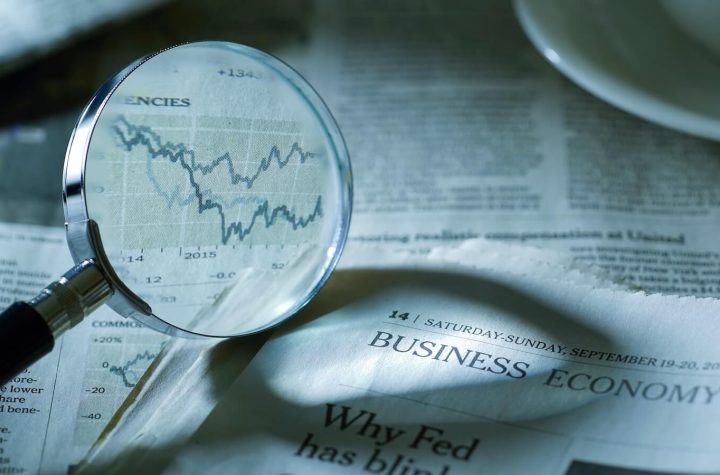
Underwood & Underwood. National Archives Identifier 45490503.
Early in The Wealth of Nations, Adam Smith brought up a woolen coat of the kind the average workman of eighteenth-century Scotland might find familiar. The coat was, Smith argued, a wonder of cooperation and an example of the division of labor and the division of knowledge. The day-laborer’s woolen coat is the product of innumerable hands and minds. A coat like the one I have worn for almost twenty years can be bought for about $130 online, or a little over four hours’ work at average American wages. It’s easy to take for granted, but something so simple we take for granted and don’t even think about is something no single mind can comprehend. It is a product, as the Scottish philosopher Adam Ferguson said, of “human action, but not of human design.” G.K. Chesterton, as quoted by Leonard Read, says “We are perishing for want of wonder, not for want of wonders.”
Alfred North Whitehead said “civilization advances by extending the number of important operations which we can perform without thinking of them,” and Thomas Sowell has explained how we can survive with a much narrower knowledge base than our ancestors. They had to know how to skin and kill animals, and they had to know which plants they could eat. When I want food and clothing, I just need to know how to get to the store.
When you buy a coat, you perform innumerable “important operations” without thinking of them. You buy a coat because you want to stay warm and look nice. What are among the “innumerable operations” you “perform without thinking of them”? I doubt you have more than a superficial knowledge of the care and feeding of sheep, the sorting, grading, and labeling of different kinds of wool, nor do you know how the price of wool changes, has changed, or might change. How much do you know about carding and spinning wool? About the supply chain that gets wool from the farm to the factory? About transoceanic shipping?
In the twenty-first century, what do you know about the software that makes Amazon.com run or that processes your payments swiftly, securely, and reliably?
“Wonder” is not too strong a word to describe a social process that allows us to get so much bread and so much clothing for so little sweat of our brows. It’s not a miracle in the strictest sense, though it might seem like it. The coat is the product of a systemic process appropriate to the kind of world God created. We divide labor. We divide knowledge. The results are products we could not design from start to finish, and even if we could, we wouldn’t be able to tell without prices which ones create value.
Let’s consider the pencil discussed by Leonard Read in his classic essay “I, Pencil” in light of the economist Roger Garrison’s description of the structure of production. A lot has to happen between raw and wild earth and a device we can use to record and transmit coded knowledge. First, raw materials have to be mined. Graphite has to be mined. Trees have to be felled. The oil that turns into the diesel fuel that powers the trucks carrying pencils across the country has to be extracted. The metal that goes into the ferrule has to be mined. The raw earth of dirt and water is transformed into something at least a little bit more useful: unrefined ore, trees that have been cut down, oil that has been extracted from the ground, cotton that has been picked, and wool that has been sheared and collected.
The next stage of production is refining. This is where people take the iron ore, cut trees, crude oil, and other stuff they’ve pulled from the ground and then turn them into industrial materials like lumber, steel, bronze, brass, kerosene, diesel fuel, asphalt, gasoline, and other commodities. Refining gets raw materials ready for the next stage of production: manufacturing.
Manufacturing is applying effort and intelligence to turn refined commodities like cotton and wool that have been sorted and graded, steel, fuel, and lumber into goods like pencils, pens, cars, and computers. After they are manufactured, goods enter into the distributing and retailing stages of production. Distributing gets goods from factories to warehouses to store shelves while retailing gets goods from store shelves into the hands of end consumers.
In each stage, people exert effort and apply intelligence to create value. Refiners take raw materials and turn them into commodities that are a little more useful. Manufacturers turn these commodities into goods that are in turn a little more useful. Distributors and retailers may not manufacture anything, but they create value by getting goods like pencils, computers, and cars closer to where end users can use them. These are important and often overlooked ways people create value. Transforming one pile of materials into another can create value, but so can changing where and when a good can be found. A pencil in a warehouse differs from a pencil in your desk drawer. It’s prohibitively costly for you to get and use the pencil in the warehouse. It’s trivially easy to get and use the pencil in your desk drawer.
The structure of production shows us why land and labor have value. It’s a mistake, albeit a common one, to think that goods have value because of all the resources that went into them. This gets things exactly backward, however. Production moves forward through successive stages, from raw materials to finished goods. Valuation moves backward through successive stages of production from finished goods to raw materials. Land and labor get their value from the finished goods and services they produce. A stand of cedar trees, therefore, is valuable because it can be used to produce pencils, closets, shoe trees, furniture, and other goods. These goods do not get their value because they are created from cedar.
We can describe and define a similar process for every good. A tractor? Iron ore has to be mined and then refined into the steel used to manufacture a tractor. The Tractor has to be distributed to a tractor dealership, where a farmer buys it. A waffle? A farmer has to “mine” grain, a miller has to refine it into flour, then waffle batter has to be manufactured, distributed to Waffle Houses around the country, and then turned into waffles that become someone’s breakfast. The prices you pay for all the resources that go into your morning waffle emerge from the competing bids and asks from people around the world who might have different ideas about what can be done with iron ore, steel, tractors, wheat, flour, and so on — and they are willing to pay these prices because they expect, ultimately, consumers to reward them by giving them money in exchange for whatever they’re making.



More Stories
Why the ‘Green Economy’ Is Suddenly in Retreat—in Europe, America, and on Wall Street
Labor Isn’t Value
Against YIMBY Leninism